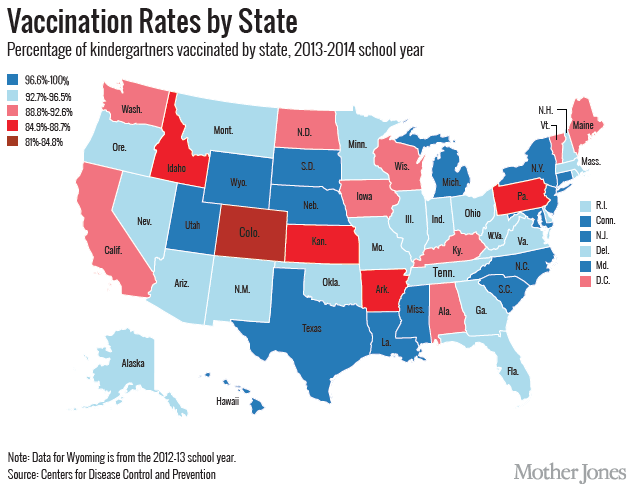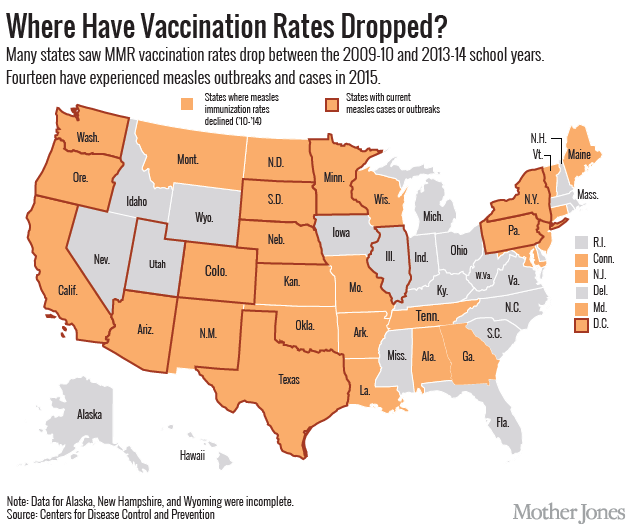
Measles is making a comeback: The extremely contagious and potentially deadly disease was eliminated in the United States in 2000, thanks to a highly effective vaccine and laws requiring kids to be vaccinated before starting school. But in recent years, it has become easier for parents to opt out—and vaccination rates are slipping. The Centers for Disease Control and Prevention reported a major spike in cases in 2014, and 2015 might be even worse—in just over a month, there have been 102 cases (and counting) reported across 14 states, mostly connected to December’s Disneyland outbreak.
As we reported yesterday, Anne Schuchat, an assistant surgeon general and the director of the CDC’s National Center for Immunization and Respiratory Diseases, stressed that measles could get “a foothold in the United States and [become] endemic again” if people don’t get vaccinated.
Overall, national vaccination rates seem high: The median rate of coverage for the measles, mumps, and rubella (MMR) vaccine, administered to most before entry into kindergarten, was 94.7 percent for the 2013-14 school year. But, as Schuchat points out, the rate is lower in communities where unvaccinated families tend to cluster. In some areas, low rates might have more to do with access to clinics than with beliefs about vaccinations.
“The national estimates hide what’s going on state to state. The state estimates hide what’s going on community to community. And within communities there may be pockets,” Schuchat said. “It’s one thing if you have a year where a number of people are not vaccinating, but year after year in terms of the kids that are exempting, you do start to accumulate.”

Note: This second map has been revised.














